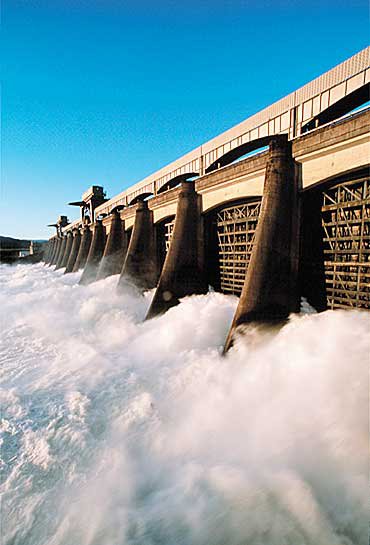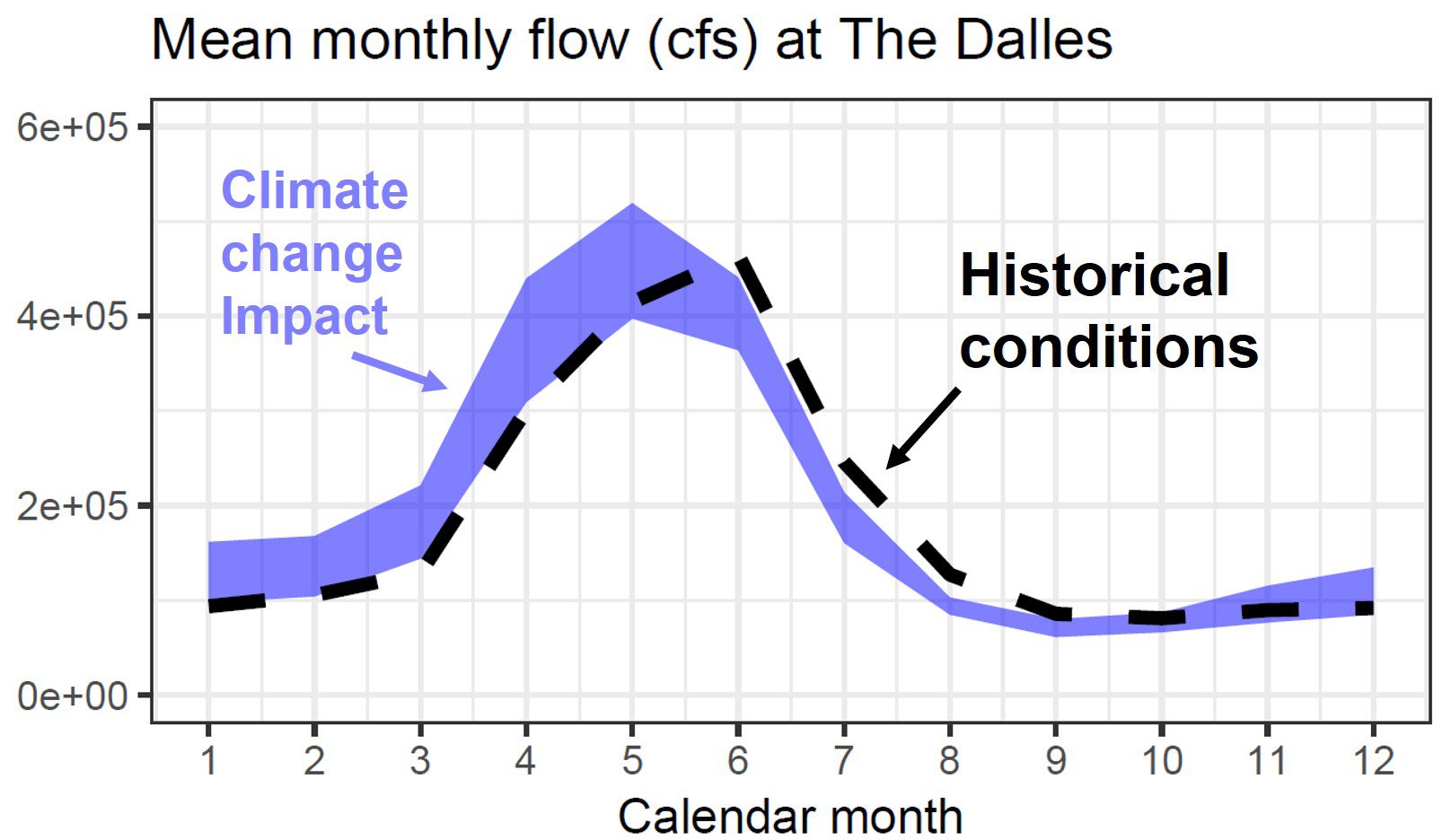Climate Change Impacts Will Affect Timing, Volume of River Flows And Hydropower, Study Asserts
- November 26, 2018

Climate change is likely to bring warmer, wetter winters, earlier snowmelt runoff, and longer, drier summers to the Pacific Northwest. Hydropower dam operators need to be ready for the change, scientists from the Pacific Northwest National Laboratory told the Council at its November meeting, reviewing the results of an international study.
Researchers for the European Union and the U.S. Department of Energy have been studying the possible responses of water-dependent power systems like that in the Columbia River Basin to climate change. Sean Turner and Nathalie Voisin of the Pacific Northwest National Laboratory, and John Fazio, a systems analyst for the Council, discussed that work with the Council at its November meeting.
More water in the winter could mean increased availability of hydropower at a time of the year when, historically at least, electricity demand has been highest, Voisin said. Conversely, less rainfall, a smaller mountain snow pack and warmer temperatures in the summer could have the reverse effect. But if there is more water in the system overall – a big uncertainty is how much more – maybe it could be managed in a way that will help hydropower and also fish that are migrating through the Columbia and Snake rivers.
Fazio said preliminary analyses of climate change effects on temperature and river flows indicate that the critical period, in terms of planning resources to maintain power supply adequacy, will change from winter to summer within the next 20 years. Warmer winter temperatures reduce demand for electricity at the same time that more water (and hydroelectric generating capacity) is in the river, potentially eliminating some shortfall possibilities. Conversely, summer power demand is expected to increase with higher temperatures and increased cooling demand while river flows are expected to be lower, primarily due to a smaller mountain snow pack, which will increase the likelihood of a power shortfall.

As the amount and timing of river flows change, and as the annual spring runoff moves earlier in the year, as is expected, dam operations will have to be adjusted to continue to protect against flooding and to help fish migrating in the Columbia River in the warmer spring and summer, Fazio said. While there remains a great deal of uncertainty around the details of future climate scenarios, it is important for the Council to consider climate change in its planning, he said.
The Council is using data from both studies in power system modeling for its Northwest Power Plan, which assesses power demand 20 years into the future and assigns low-cost, low-carbon generating resources, and energy efficiency improvements and demand response, to meet the anticipated demand. Work on the next five-year plan is expected to begin next year.
Links:
Pacific Northwest National Laboratory presentation
NOAA Fact Sheet on Climate Change and Atmospheric Carbon Dioxide



